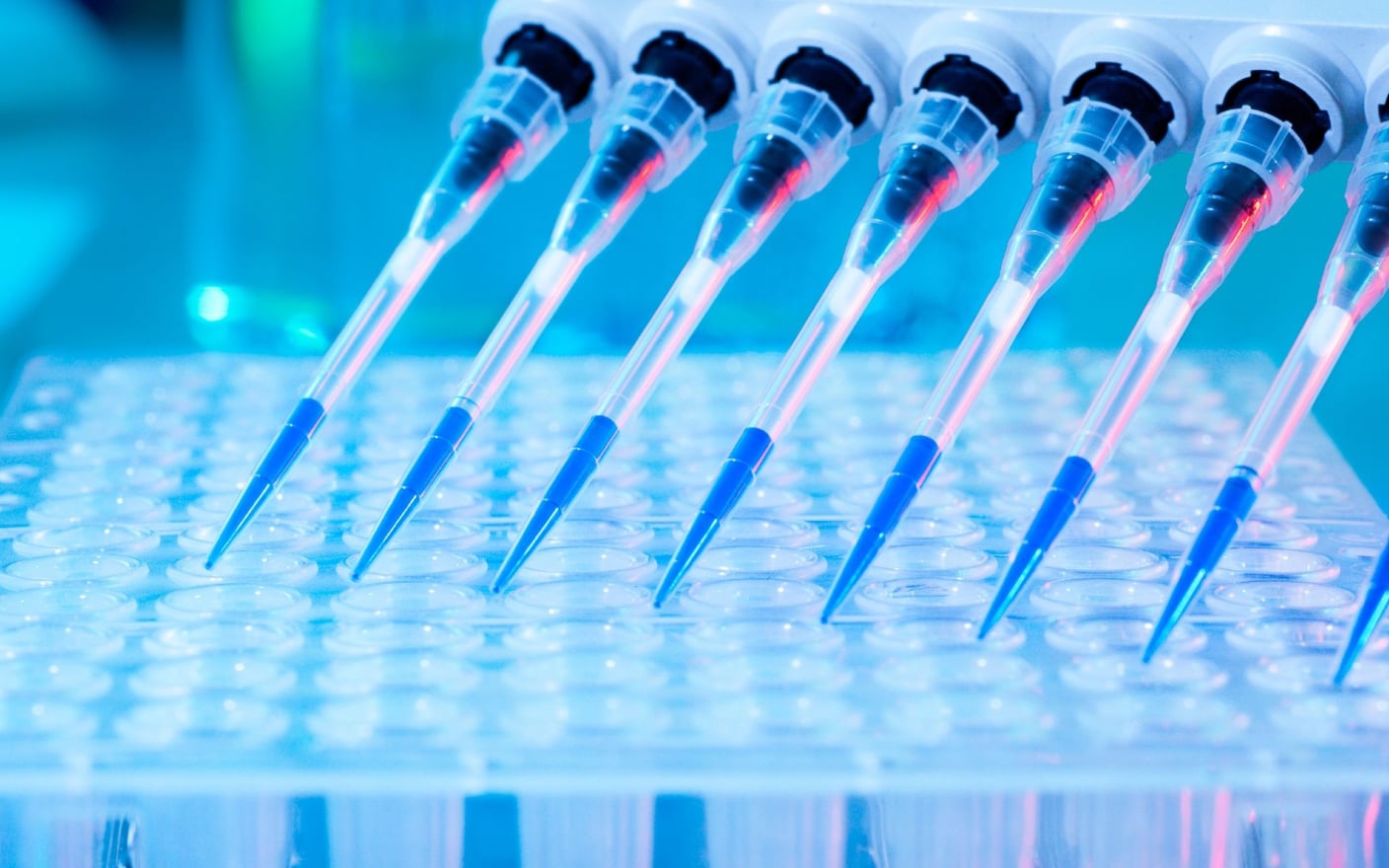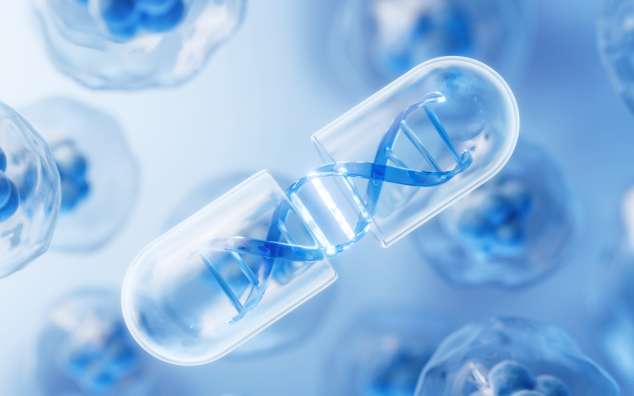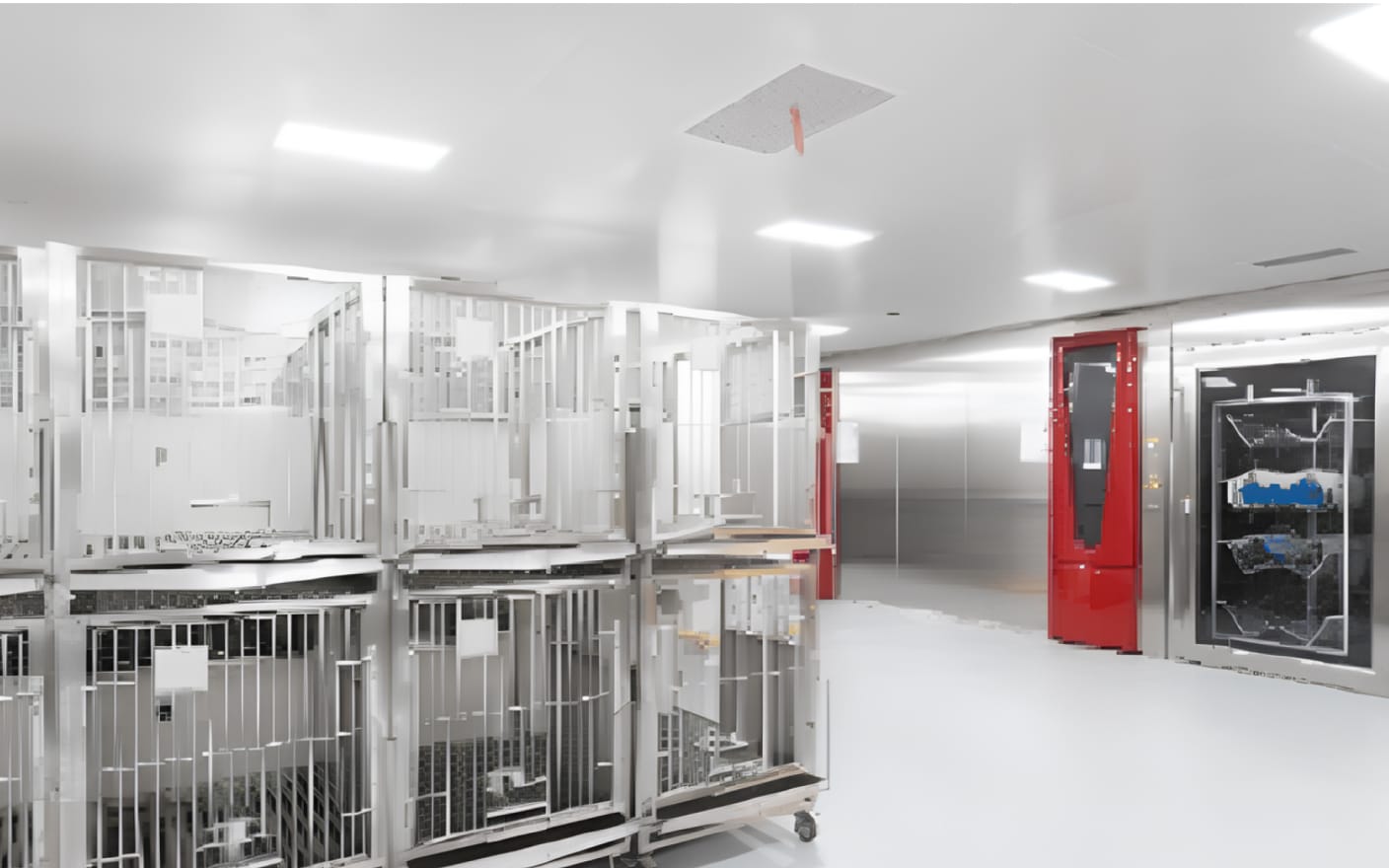The long R&D cycle and high investment pose significant challenges in new drug development. Obtaining clinically relevant experimental data of candidate compounds in early stages to determine their development value is crucial for addressing these challenges. In recent years, the method of predicting in vivo data using data from in vitro tests has gained appreciation and application. In vitro–in vivo extrapolation (IVIVE) can assist researchers in predicting the rate of hepatic metabolic elimination, thereby reducing time and cost. In this article, the meaning, challenges, and the establishment of a more accurate IVIVE model will be introduced.
What is in vitro - in vivo extrapolation (IVIVE) and its challenge
Drug metabolism refers to the process of structural transformation catalyzed by various factors such as metabolic enzymes, also known as biotransformation. Drug metabolism is one of the main factors affecting the exposure and bioavailability of drugs in the body, which has run through all stages of drug development (Figure 1). Metabolic stability studies are suggested to be conducted at an early stage to reduce the failure rate in late preclinical experiments, which is an important part of the compound structure optimization process. In addition, drug metabolism also plays an important role in preclinical efficacy evaluation and guiding the rational use of drugs in clinical practice.

Figure 1. Drug metabolism study methods: in vitro and in vivo
In vitro metabolic studies mainly provide the metabolic characteristics of candidate compounds using various in vitro metabolic models. By establishing a structure-activity relationship, chemists can quickly perform structural modifications. In addition, in vitro studies can eliminate some in vivo interferences. The characteristics of in vitro models are rapidity and high throughput, which are suitable for the early drug discovery stage.
In vivo studies are to take samples at different time points for analysis after dosing, which can comprehensively and truly reflect the characteristics of compounds.
Both in vitro and in vivo studies have their respective strengths. In vitro experiments, in comparison to in vivo experiments, offer advantages of lower costs and shorter cycles. In vitro studies can screen compounds to enter the in vivo pharmacokinetic experiments (Figure 2) to increase the success rate.

Figure 2. In vitro - in vivo extrapolation
With the development of in vitro – in vivo extrapolation technology, its application has expanded from the animals to humans. However, in vitro predictions often underestimate the actual in vivo data, with the in vitro-derived in vivo clearance typically falling below the measured value by a range of 3 to 10 folds [1-2]. Researchers have made a lot of improvements, and although the reliability was improved, their underestimation mechanism remained unclear. So the problem is to further optimize the in vitro metabolic reaction system to improve the accuracy and reliability of experimental results, and to improve the accuracy of in vitro prediction in vivo.
In response to this, our laboratory has carried out a series of work and established an in vitro – in vivo extrapolation method for deriving in vivo metabolism from in vitro metabolic data, enabling more accurate prediction of metabolic clearance in vivo.
How to establish the IVIVE model
Establishing in vitro–in vivo extrapolation methods involve two primary steps: firstly, to obtain the intrinsic hepatic clearance through in vitro study, and secondly, to establish a correction equation for the intrinsic hepatic clearance in vitro study to accurately predict the in vivo clearance (see Figure 3).

Figure 3. Flow chart for the establishment of correction equation of intrinsic hepatic clearance
Step 1. Obtaining intrinsic hepatic clearance in in vitro metabolism experiments
Liver metabolism was selected to predict in vivo data because it is the primary organ of drug metabolism. The liver contains many drug-metabolizing enzymes, the most abundant of which are P450 enzymes. More than 75% of drugs cleared by metabolic pathways are metabolized by P450 enzymes, mainly in microsomes. Therefore, liver microsomes are the most commonly used experimental materials in metabolic stability experiments at the drug discovery stage, and they are easy to operate and cost-effective.
In addition, about 96% of the compounds are metabolized by both P450 enzymes and phase II enzymes. For these compounds, hepatocytes are recommended as an in vitro metabolic study system. As a complete system, hepatocytes contain a very wide variety of enzymes with many enzymes and cofactors that are not present in microsomes. Considering the uniqueness of these two matrices, we chose both liver microsomes and hepatocytes as in vitro test systems for in vitro – in vivo extrapolation, and screened the optimal in vitro metabolic incubation system through optimizing a series of in vitro methods.
Step 2: Establishing the correction equation of intrinsic hepatic clearance in in vitro metabolism experiment
To begin with, the selection of appropriate commercial compounds should consider the following three aspects:
These compounds are assumed eliminated by hepatic metabolism, and neither biliary secretion nor non-hepatic clearance mechanisms were considered.
To improve the application range of the established method, acidic, basic, and neutral compounds were included in the selection of compounds.
The selected compounds have reported human clearance data that can be used to extrapolate theoretical intrinsic hepatic clearance.
Based on the above factors, 15 commercial drugs were selected for in vitro liver microsome and hepatocyte metabolic stability experiments, liver microsome and hepatocyte protein binding experiments, plasma protein binding and drug partition ratio experiments, and the measured intrinsic clearance rate of these compounds in human liver microsomes and human hepatocytes [CLint (liver)], free fraction value of human liver microsomes and hepatocytes [fu (inc)] and free fraction value of protein binding [fu (b)] were obtained, and the theoretical in vivo clearance rate (CL) was further calculated using the well-stirred model. This model is simple and widely used at present, especially suitable for the early screening of new chemical entities. It is assumed that the diffusion rate of drugs into the liver is not limited by any barrier, only free drugs are involved in metabolism, and metabolic enzymes are evenly distributed in the liver.

The results are shown in Figure 4: the abscissa represents the measured intrinsic hepatic clearance, the ordinate represents in vivo the in vitro theoretical intrinsic hepatic clearance is back-extrapolated in combination with the free fraction of plasma protein of each compound. As the underestimation phenomenon mentioned in the industry, the measured values are lower than the theoretical values. The correction equation for the intrinsic hepatic clearance was obtained by linear regression of the two (formula in the upper left-hand section of the graph). In the figure, the error multiples of the theoretical and measured hepatic intrinsic clearance values of the compound are represented by the lines of different colors, respectively. According to the standard range of two-fold judgment commonly used in the literature [4], in the correlation chart of theoretical and measured intrinsic hepatic clearance of selected compounds, 67% of drugs in the hepatocyte metabolic system had their difference within the two-fold range, and 69% of drugs in the liver microsomal metabolic system had their difference within two-fold range.

Figure 4. Correlation of observed and theoretical hepatic intrinsic clearance from in vitro metabolism experiments with human hepatocytes (A) and human liver microsomes (B)
Validation of in vitro–in vivo extrapolation methods
We selected two commercial compounds for in vitro metabolism and protein binding experiments, used the established correction equation to correct the intrinsic hepatic clearance, and used the corrected intrinsic hepatic clearance combined with a fully stirred model to predict the clearance in humans, then compared with its measured clearance in vivo reported in the literature.
Example 1: Ganetespib (STA-9090), a heat shock protein 90 (HSP90) inhibitor. Firstly, the metabolic stability study of human liver microsomes and hepatocytes was carried out. It was found that although the compound was metabolized in liver microsomes, the intrinsic hepatic clearance rate of hepatocytes was much higher than that of liver microsomes. Therefore, it was determined that the compound was metabolized by phase I and phase II enzymes. We selected human hepatocytes for the prediction of the in vivo clearance rate and used the correction equation to correct the intrinsic hepatic clearance rate. Meanwhile, the free fraction of the compound in human hepatocytes was determined, and the free fraction of the compound in whole blood was obtained through plasma protein binding experiments combined with blood partition ratio. Finally, the full stirring model was used for prediction, and the in vivo clearance value was obtained as 10.32 mL/min/kg. The measured human clearance rate reported in the literature of this drug was 10.50 mL/min/kg. The observed value was 1.02 folds higher than the predicted value, which is in good agreement and demonstrates the accuracy of our established in vitro–in vivo extrapolation model based on hepatic metabolic clearance.
Example 2: Digoxin, a kappa receptor agonist that acts as an analgesic. After comparing the experimental data of the metabolism of human liver microsomes and hepatocytes in vitro, it was found that it was also metabolized by phase I and phase II metabolic enzymes, so we selected the data of human hepatocyte metabolism to predict its in vivo clearance rate and calculated that the in vivo metabolic clearance parameter was 19.02 mL/min/kg. The measured clearance in humans was 49.3 mL/min/kg, and the measured value was 2.59 folds of the predicted value. According to the literature, there was a renal clearance pathway for the metabolites, so its predicted hepatic metabolic clearance was less than the total clearance measured in vivo, which was reasonable. These two examples indicate that the IVIVE has much lower error multiples than the 3 to 10 folds.
By correcting the equation of intrinsic hepatic clearance, we established a more accurate method to predict the clearance in humans by in vitro metabolism with human liver microsomes and hepatocytes, and obtained the in vitro – in vivo extrapolation model in our WuXi AppTec DMPK laboratory.
Conclusion
In vitro–in vivo extrapolation models can predict the metabolic clearance characteristics of drugs in vivo, help to determine the value of drug development in advance, provide guidance for in vivo experiments, and save research and development time and cost.
Talk to a WuXi AppTec expert today to get the support you need to achieve your drug development goals.
Authors: Xiangling Wang, Haijuan Liu, Genfu Chen
Committed to accelerating drug discovery and development, we offer a full range of discovery screening, preclinical development, clinical drug metabolism, and pharmacokinetic (DMPK) platforms and services. With research facilities in the United States (New Jersey) and China (Shanghai, Suzhou, Nanjing, and Nantong), 1,000+ scientists, and over fifteen years of experience in Investigational New Drug (IND) application, our DMPK team at WuXi AppTec are serving 1,600+ global clients, and have successfully supported 1,500+ IND applications.
Reference
1. Poulin P, Haddad S. Toward a new paradigm for the efficient in vitro-in vivo extrapolation of metabolic clearance in humans from hepatocyte data. J Pharm Sci. 2013 Sep; 102 (9): 3239-51.
2. Sohlenius-Sternbeck AK, Jones C, Ferguson D, Middleton BJ, Projean D, Floby E, Bylund J, Afzelius L. Practical use of the regression intrinsic approach for the prediction of in vivo clearance clearance from hepatocytes. Xenobiotica. 2012 Sep; 42 (9): 841-53.
3. Di L. The role of drug metabolizing enzymes in clearance. Expert Opin Drug Metab Toxicol. 2014 Mar; 10 (3): 379-93.
4. Sodhi JK, Benet LZ. Successful and Unsuccessful Prediction of Human Hepatic Clearance for Lead Optimization. J Med Chem. 2021 Apr 8; 64 (7): 3546-3559.
Related Services and Platforms




-

 In Vitro ADME ServicesLearn More
In Vitro ADME ServicesLearn More -

 In Vivo PharmacokineticsLearn More
In Vivo PharmacokineticsLearn More -

 Physicochemical Property StudyLearn More
Physicochemical Property StudyLearn More -

 Permeability and Transporter StudyLearn More
Permeability and Transporter StudyLearn More -

 Drug Distribution and Protein Binding StudiesLearn More
Drug Distribution and Protein Binding StudiesLearn More -

 Metabolic Stability StudyLearn More
Metabolic Stability StudyLearn More -

 Drug Interactions StudyLearn More
Drug Interactions StudyLearn More -

 Rodent PK StudyLearn More
Rodent PK StudyLearn More -

 Large Animal (Non-Rodent) PK StudyLearn More
Large Animal (Non-Rodent) PK StudyLearn More -

 Clinicopathological Testing Services for Laboratory AnimalsLearn More
Clinicopathological Testing Services for Laboratory AnimalsLearn More -

 High-Standard Animal Facilities and Animal WelfareLearn More
High-Standard Animal Facilities and Animal WelfareLearn More -

 Preclinical Formulation ScreeningLearn More
Preclinical Formulation ScreeningLearn More
Stay Connected
Keep up with the latest news and insights.
















